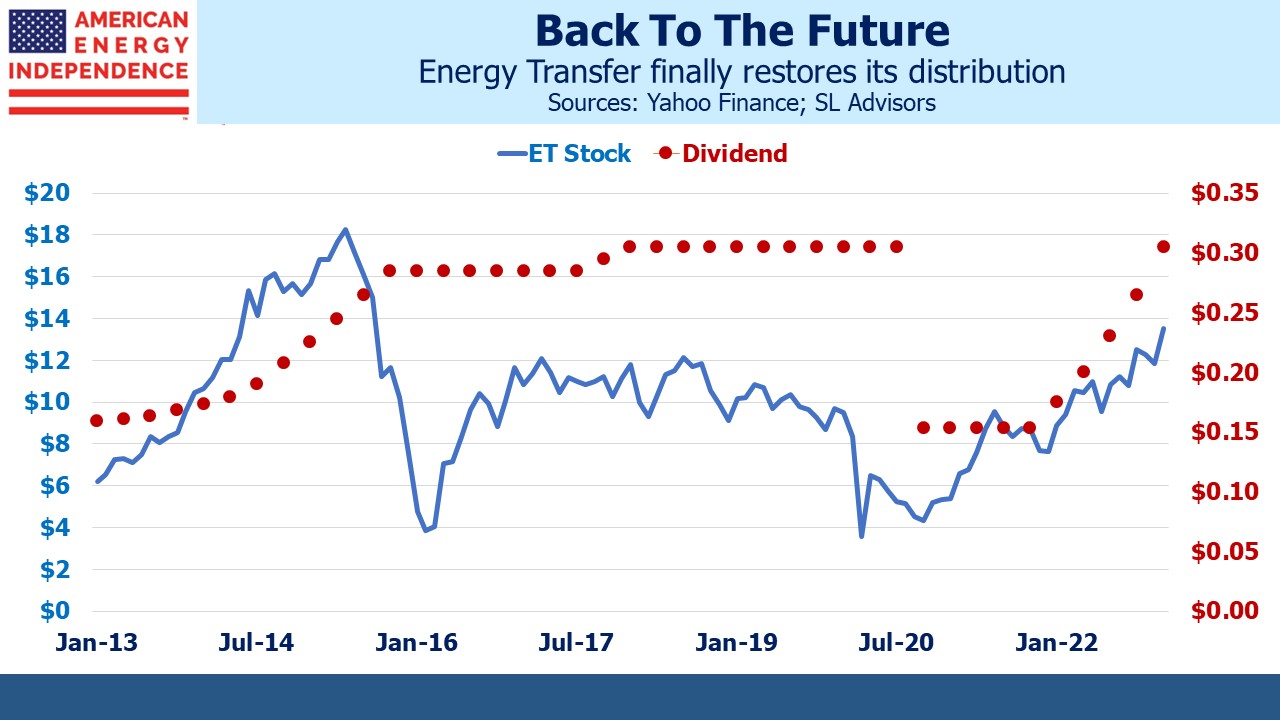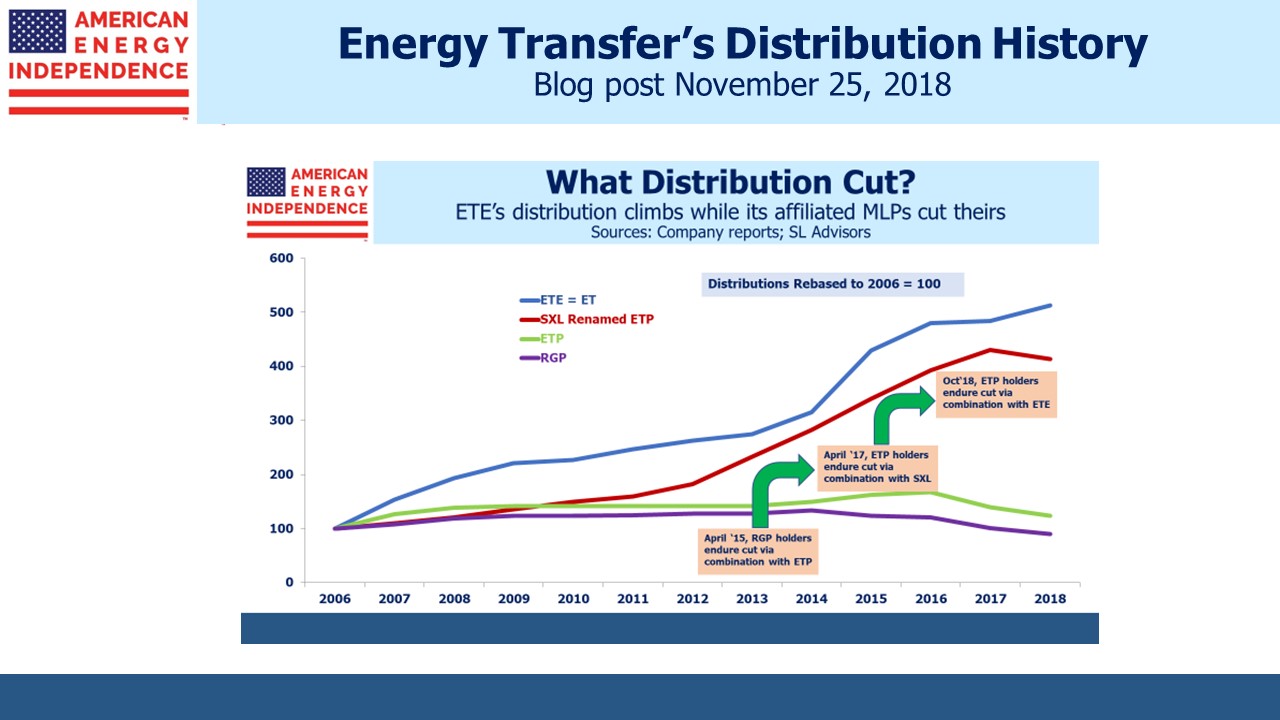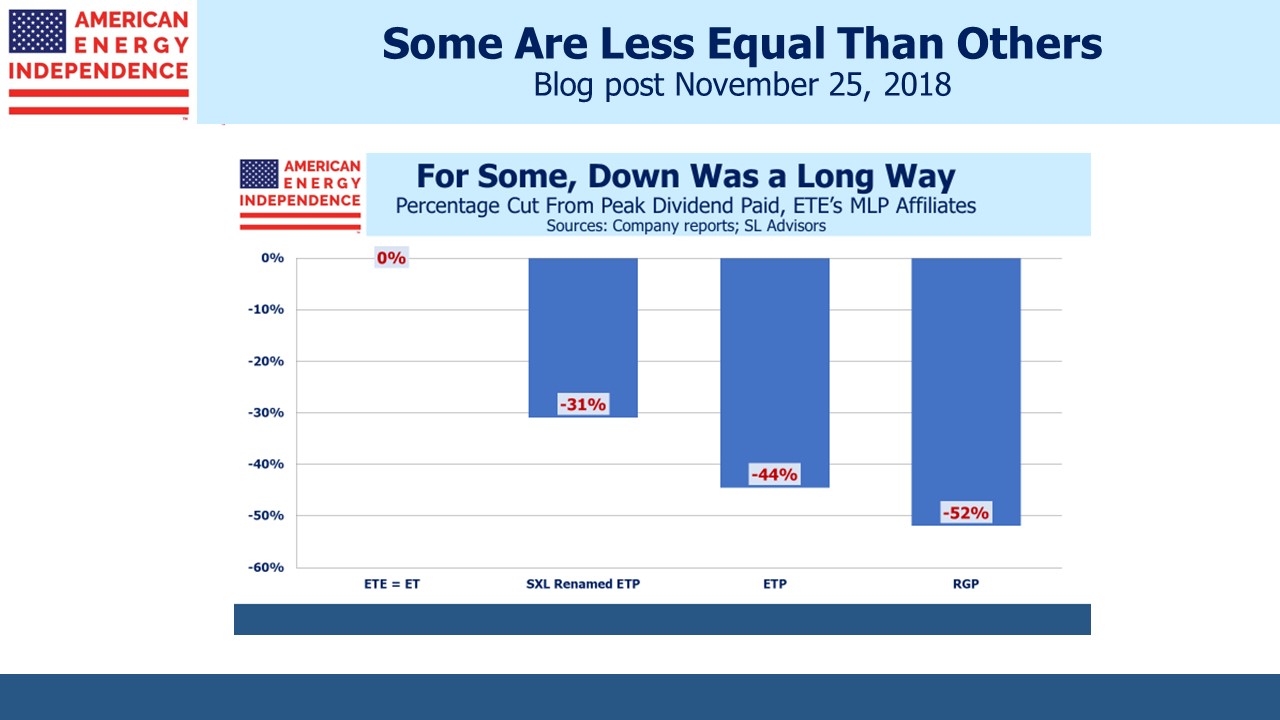Energy Transfer’s Distribution Management
Last week Energy Transfer (ET) raised their quarterly distribution to $0.305, restoring it to a level last paid in July 2020. This cheered a great many people. Among the financial advisors we talk to it is the most widely held individual name. It is perennially cheap. JPMorgan, Morgan Stanley and (according to Refinitiv) 94% of sell side analysts list ET as Overweight.
Following the distribution hike, up 75% year-on-year, ET yields 9.1%. It remains the cheapest big MLP with a 2023 Distributable Cash Flow (DCF) yield of 18%. Under the old MLP standard that prevailed prior to the shale investment bust, 90% of DCF was commonly paid in distributions. Following the hike, their payout ratio is a parsimonious 50%. Like a great performer, ET leaves its audience hoping for more.
Co-CEOs Marshall McCrea and Tom Long retain the deft touch of former CEO (now Executive chairman) Kelcy Warren. ET executes well but always prioritizes management’s interests. Search results on our blog reveal they’re mentioned in 141 separate posts. Enbridge is 54.
In 2016 Energy Transfer Equity (ETE), the entity that ultimately became ET, issued a lucrative class of convertible preferred securities to insiders on the management team (see Is Energy Transfer Quietly Fleecing its Investors?). These securities allowed reinvestment of preferred dividends at $6.56 even if the prevailing unit prices was higher which it always was. This attractive feature was denied to other investors which led to a class action lawsuit. We wondered aloud, Will Energy Transfer Act with Integrity? ET answered by arguing that their maneuver had allowed them to preserve their distribution, winning the case.
ETE was once the General Partner (GP) of MLPs Sunoco Logistics, Energy Transfer Partners and Regency Partners. Through a series of mergers culminating with being absorbed by ETE in 2018, all these LP unitholders endured substantial distribution cuts while ETE’s was preserved (see Energy Transfer: Cutting Your Payout, Not Mine). Management’s investment in Energy Transfer was overwhelmingly in the GP, ETE. We made our investment there to assure the best possible alignment of interests. Notwithstanding the legal case argued in Delaware Chancery by ETE in defense of its indefensible preferreds, many investors in the Energy Transfer family have endured payout cuts.
ET, the surviving entity having absorbed all its MLPs, cut its distribution in late 2020. Investor skepticism about the payout had driven the yield to 18%. Covid-led demand destruction, albeit brief, didn’t help. With no reward in the stock price for such largesse and facing rating agency pressure because of its 5X Debt:EBITDA leverage, the company decided it had better uses for available cash than paying ungrateful unitholders (see Why Energy Transfer Cut Their Distribution). This 50% cut meant long-time investors in Sunoco Logistics, Energy Transfer Partners and Regency Partners had endured cuts of 66%, 72% and 76% respectively since being combined with the parent.
Following last week’s distribution hike ET still trades at a meaningful discount to other large MLPs Enterprise Products Partners (EPD) and Magellan Midstream (MMP). We retain a full position for this reason, but always with a self-protective wariness. ET’s history does not induce the comfort of straight dealing that, say, Jim Teague of EPD provides to their investors.
In 2019 Blackstone acquired the 56% of Tallgrass Energy it didn’t already own via a transaction that paid a substantial premium for management’s units versus the lower one paid to everyone else (see Blackstone and Tallgrass Further Discredit the MLP Model). Perhaps ET’s $41BN market cap makes it too big for such a coup. But you know that if they could do it, they would.
ET’s diverse and well positioned midstream assets, which are largely supported with fee-based contracts offer attractive upside. Their Lake Charles LNG project will add exposure to growing global demand for US natural gas.
LNG import terminals allow for diverse sources. As Germany has learned, if your energy comes via a pipeline you’re locked into a long-term relationship with the supplier. European LNG demand is growing but Asia remains the biggest market. The Philippines expects to increase imports as their Malampaya gas field in the South China Sea winds down. The government just approved construction of a seventh import facility.
The slide in US natural gas prices is due to our mild winter. The Freeport LNG export unit is coming back on line, which will create some additional demand. Cheap US gas will stimulate additional demand for US exports, which will eventually support domestic prices. Curbing US households’ use of gas stoves never looked like a serious proposition, but in any event will not alter the growth in long-term demand.
We have three funds that seek to profit from this environment:


